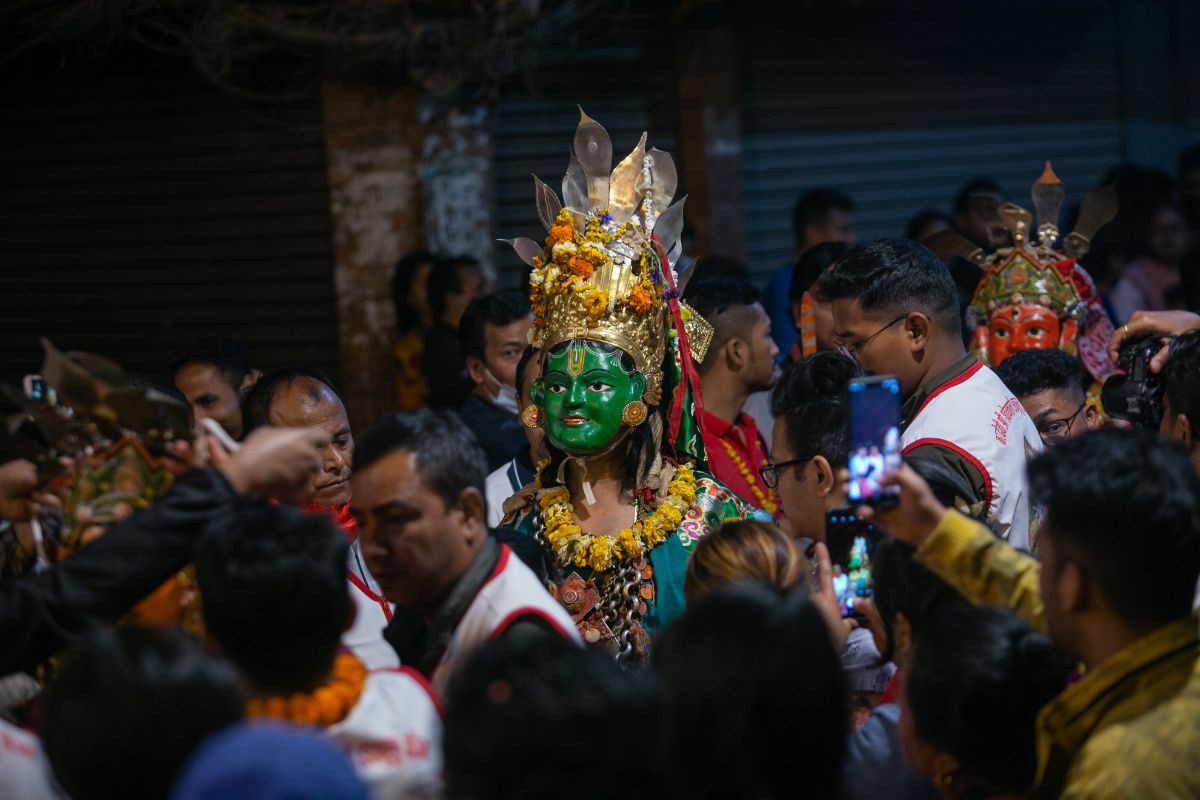
Kathmandu valley is famous for its traditional rituals of the indigenous Newar community. Of the many traditional jatra (a traditional function) at Naradevi in Kathmandu that happens once in every 12-year is currently undergoing.
During the jatra a traditional dance of deity Naradevi 'Ngatbhulu Azima' (Shwetakali) is performed along with various gods and goddesses.

The sacred 'Ngatbhulu Azima' dance, is being performed this year after 2066 BS. There is a tradition of celebrating the special Devi Nacha Parva (goddess dance festival).
In this twelve year procession, the idols of Naradevi are taken around all nooks and corners of Naradevi for the residents to pay homage to. The beginning puja of Nardevi like ‘Forgiveness Worship' and ‘Kalas Sadhana Worship’ has already been completed as the locals have started the main attraction of the jatra, the dance of Nardevi.

The journey of twelve years is special in itself. Every year on the day of Paha Charhe, Naradevi is taken out in Dabli. But every 12 years, it is customary to perform dances of 17 gods and goddesses.
According to Raj Prakash Tuladhar, a member of Tabhuj Baja of 'Ngatbhulu Azima' Jatra, there is a legend that Naradevi came out of 'Cha Swa' flower for the salvation of the people. "The goddess is called Naradevi as the goddess is said to have saved the whole country from demons," Tuladhar said.

During the time of Gunakamdev (949 to 994 CE), it was customary to build temples of gods and goddesses in a triangle-shaped in the inner part ( like Kula Bhulu, Asam Bhulu) while Kathmandu Valley was rising. Among the temples in the main city centre in those days, the temple of mata Swetakali is also said to have been established.

However, he says that the practice of wearing dances with crowns of various gods and goddesses was practiced in the time of Amar Malla. The work done to make the procession even better is mentioned in the records done by Ran Bahadur Shah.

#Nardevijatra










